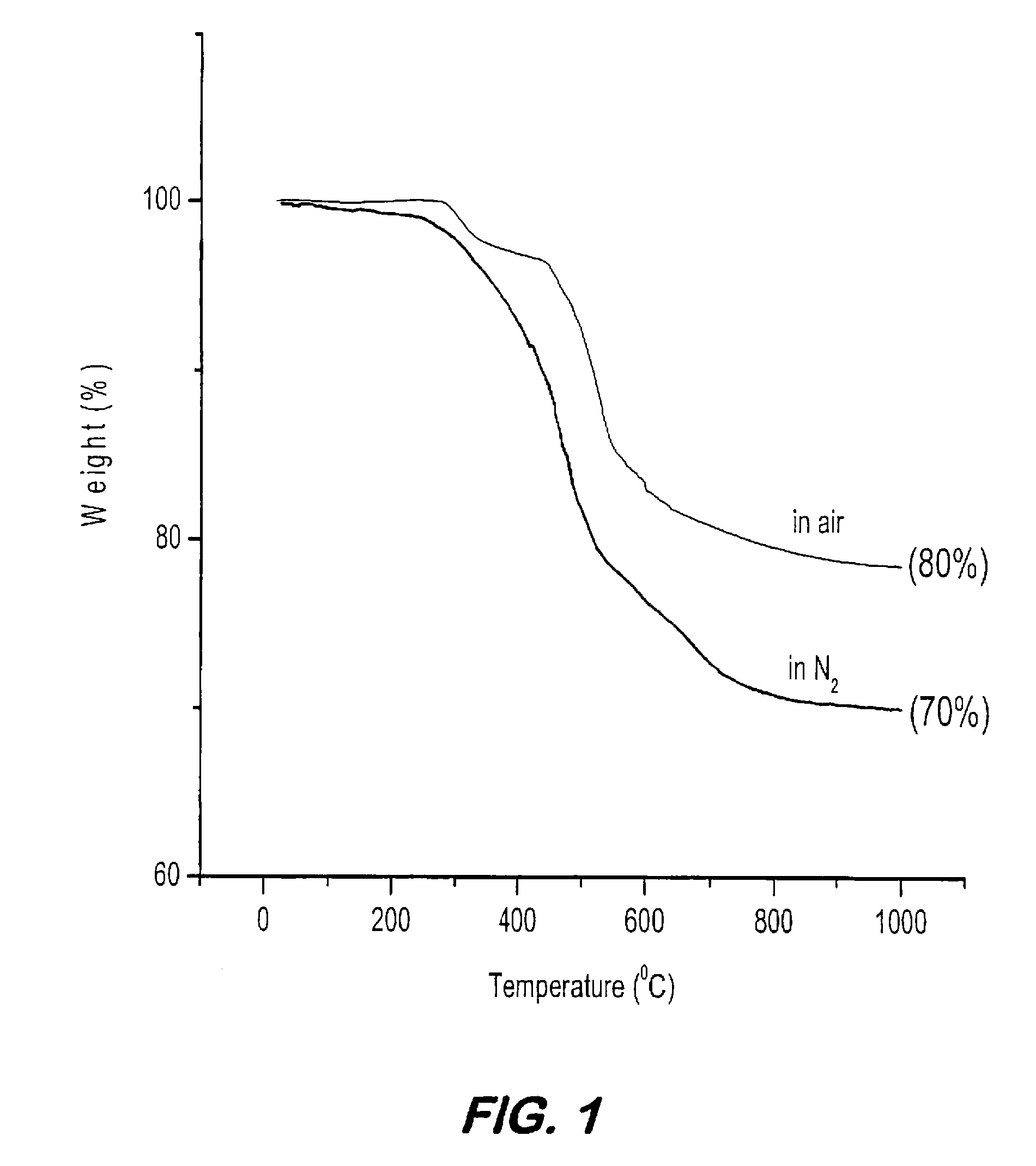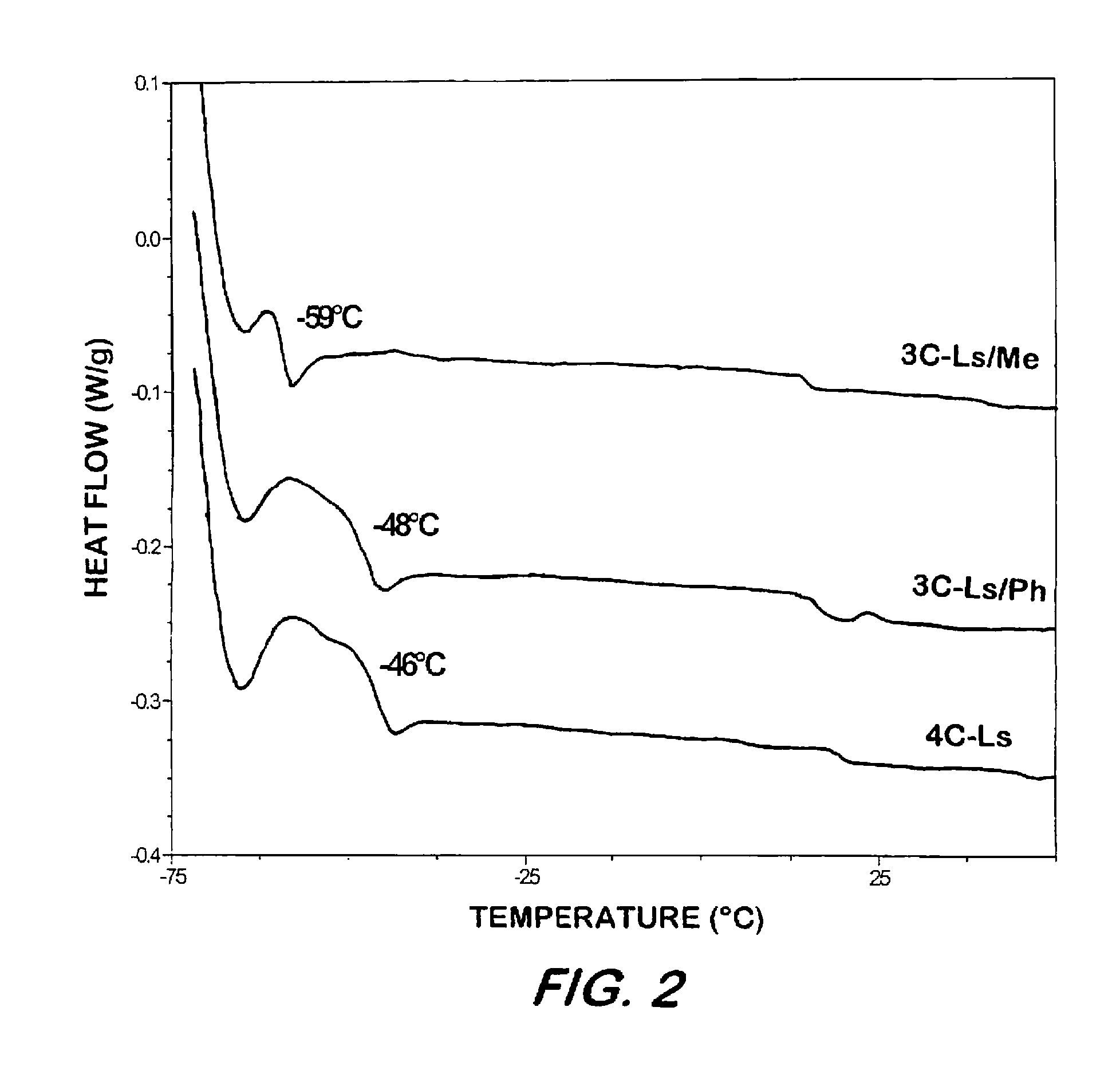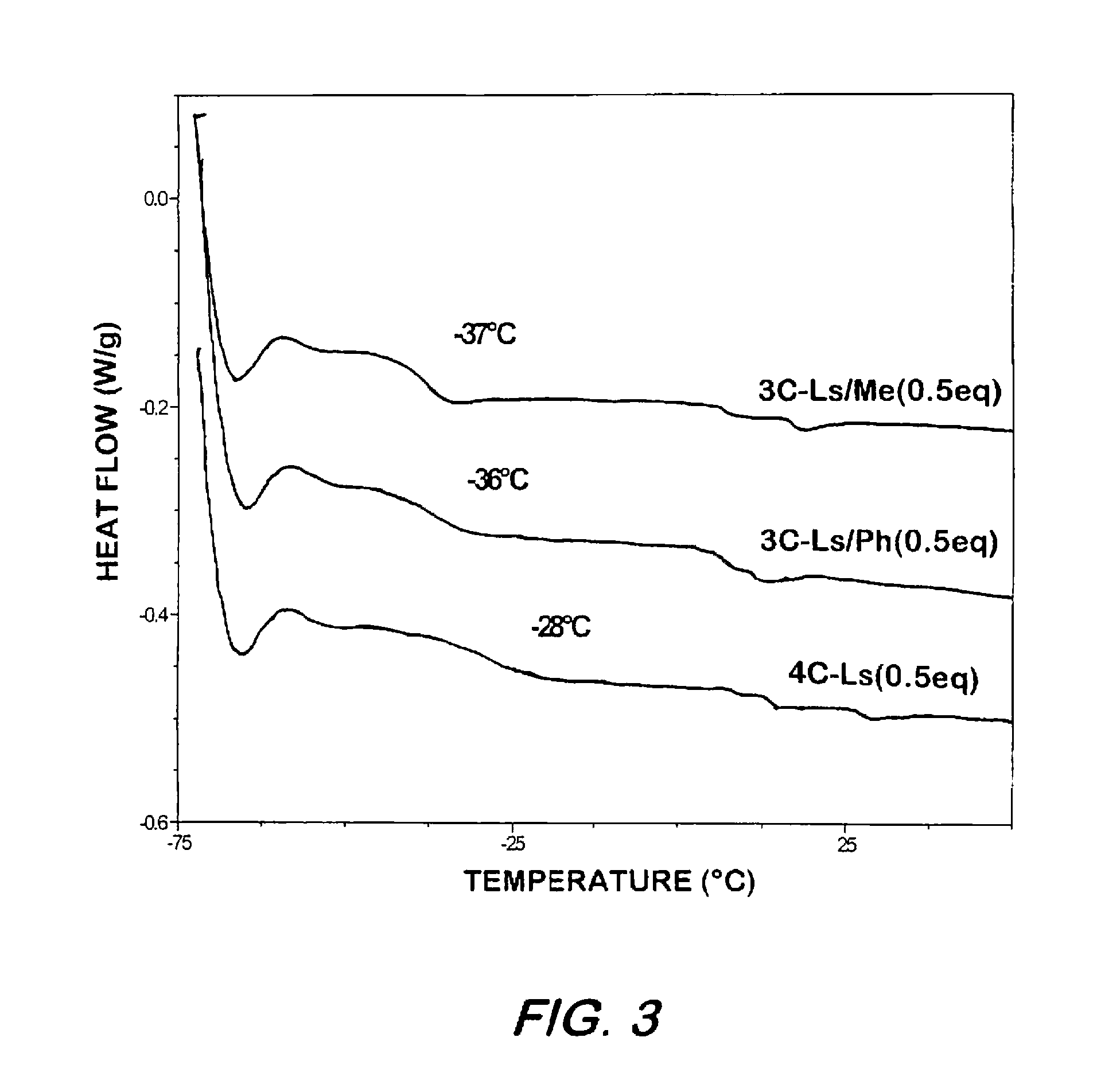Synthesis of elastomeric carborane-siloxanes by hydrosilation reactions
a technology of elastomeric carborane and siloxanes, which is applied in the field of siloxanecarborane polymers, can solve the problems of unsuitability of product characteristics (brittleness) and the inability to use these systems in elastomeric applications
- Summary
- Abstract
- Description
- Claims
- Application Information
AI Technical Summary
Problems solved by technology
Method used
Image
Examples
example 1
[0050]Synthesis of 1,7-bis(vinyltetramethyldisiloxyl)m-carborane—A flame-dried 250 mL Schlenk flask containing 1,7-bis(chlorotetramethyldisiloxyl)-m-carborane (26.36 g, 55.33 mmol) in THF (50 mL) was cooled in an ice bath. The solution was then treated with 111 mL of 1.0 M vinyl magnesium bromide (111 mmol), which was added slowly via syringe. After the addition was complete, the cold bath was removed and the resulting solution was allowed to stir at room temperature for two hours. The solution was quenched by addition of Me3SiCl (3-4 mL) and stirred for 30 min at room temperature. The reaction was then treated with diethyl ether (30 mL) and cold, saturated aqueous NH4Cl (40 mL). The organic layer was separated and the aqueous portion extracted with ether (2×30 mL). The organic extracts were combined, dried over Na2SO4, and the solution filtered through celite. After removal of volatiles with vacuum, the crude product was purified by column chromatography (two times, SiO2) eluting w...
example 2
[0051]Synthesis of 1,7-bis(ethynyltetramethyldisiloxyl)m-carborane—A flame-dried 250 mL Schlenk flask containing 1,7-bis(chlorotetramethyldisiloxyl)-m-carborane (15.81 g, 33.11 mmol) in THF (30 mL) was cooled in an ice bath. The solution was then treated with 133 mL of 0.5 M ethynyl magnesium bromide (66.5 mmol), which was added slowly via syringe. After the addition was complete, the cold bath was removed and the resulting solution was allowed to stir at room temperature for two hours. The solution was quenched by addition of Me3SiCl (2-3 mL) and stirred for 30 min at room temperature. The reaction was then treated with diethyl ether (30 mL) and cold, saturated aqueous NH4Cl (40 mL). The organic layer was separated and the aqueous portion extracted with ether (2×30 mL). The organic extracts were combined, dried over Na2SO4, and the solution filtered through celite. After removal of volatiles with vacuum, the crude product was purified by column chromatography (two times, SiO2) elut...
example 3
[0052]Reaction of 1,7-bis(vinyltetramethyldisiloxyl)m-carborane with 1,1,3,3,5,5-hexamethyltrisiloxane—In a reaction vial was taken 0.2 g (0.434 mmol) of the product from Example 1. A 0.5 mL portion of distilled hexanes was added to the vial and the mix was thoroughly stirred using a mechanical stirrer for 2 min. Using a 500 μL syringe, a drop of a 2.1-2.4 wt % Pt-containing Karstedt hydrosilation catalyst solution (purchased from Gelest, which is also used in the rest of the examples unless otherwise mentioned) was added to the mixture and was thoroughly stirred for two more minutes as before. The linear cross-linking siloxane, 1,1,3,3,5,5-hexamethyltrisiloxane, (0.055 mL, 0.217 mmol) was added drop wise with vigorous stirring via syringe and the mixture was stirred for 2 more min as before. The catalysis was instantaneous. The mixture was then left open to air to evaporate off hexanes and was further vacuum dried at 75° C. for 2 hr to yield an oily product (99%). Spectral data for...
PUM
| Property | Measurement | Unit |
|---|---|---|
| temperature | aaaaa | aaaaa |
| wavelengths | aaaaa | aaaaa |
| glass transition temperature | aaaaa | aaaaa |
Abstract
Description
Claims
Application Information
 Login to View More
Login to View More - R&D
- Intellectual Property
- Life Sciences
- Materials
- Tech Scout
- Unparalleled Data Quality
- Higher Quality Content
- 60% Fewer Hallucinations
Browse by: Latest US Patents, China's latest patents, Technical Efficacy Thesaurus, Application Domain, Technology Topic, Popular Technical Reports.
© 2025 PatSnap. All rights reserved.Legal|Privacy policy|Modern Slavery Act Transparency Statement|Sitemap|About US| Contact US: help@patsnap.com



